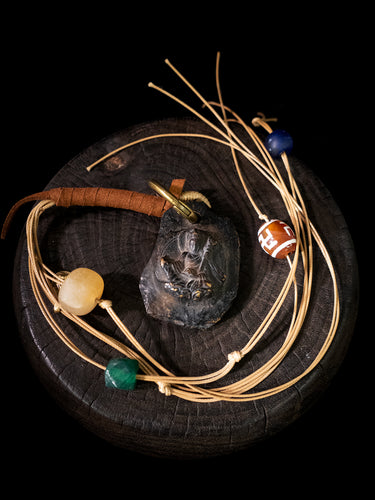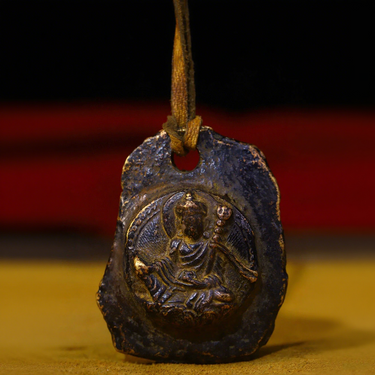
In the rich tapestry of oriental art, few symbols are as universally recognized and revered as the Lotus Sculpture Buddha Statue. Oriental Aesthetics, with its deep-rooted passion for classical oriental art, invites you on an exploratory journey into the profound symbolism, historical significance, and artistic beauty of this iconic figure. These statues, embodying a blend of spiritual depth and artistic excellence, hold a special place in the hearts of collectors, artists, and enthusiasts alike.
The Deep Symbolism of the Lotus in Buddhist Art
In Buddhist art, the lotus flower holds profound symbolism, representing purity, spiritual awakening, and the triumph of the spirit over adversity. This revered motif, often depicted in conjunction with the Buddha, resonates deeply within the Buddhist philosophy. The lotus grows in muddy water, yet blossoms into a beautiful, unsoiled flower, symbolizing the journey of the soul from the murkiness of materialism to the clarity of enlightenment. This imagery is powerfully captured in the Lotus Sculpture Buddha Statue, where the Buddha is frequently shown seated upon a lotus throne, indicating his transcendent state.
A notable example of this symbolism can be seen in the famed 'Padmapani' statue, where the Buddha holds a lotus, symbolizing his role as the bearer of spiritual purity and divine grace. Each petal of the lotus in these sculptures is meticulously carved, signifying the careful path to enlightenment, untainted by the muddy waters of material existence. The lotus in Buddhist art is not a mere decorative element; it is a profound representation of the purity, wisdom, and compassion embodied by the Buddha. This symbolism extends to various aspects of Buddhist art, where the lotus motif is consistently used to convey the core principles of Buddhism, serving as a visual reminder of the Buddha's teachings and the possibility of spiritual liberation for all beings.
Historical Evolution of the Lotus Sculpture Buddha Statue
The Lotus Sculpture Buddha Statue has undergone a remarkable historical evolution, mirroring the spread and adaptation of Buddhist art across various cultures. Originating in India, the symbol of the Buddha seated on a lotus represented the purity and divinity of his teachings. As Buddhism spread to different regions, this iconography evolved, absorbing local artistic influences while retaining its core symbolism. In Gandhara, the fusion of Greek and Buddhist art produced statues with a Hellenistic touch, evident in the draped robes and realistic features of the Buddha.
When Buddhism reached China, the Lotus Buddha statues began to reflect the unique aesthetics of Chinese art. A quintessential example is the 'Lotus Buddha of the Tang Dynasty', where the Buddha's features became softer, and the lotus throne more stylized, symbolizing a harmonious blend of spiritual and natural elements. In Japan, the statues often depict Buddha with a more elongated form, illustrating the influence of Japanese artistic traditions, as seen in the 'Amida Buddha with Lotus' from the Heian period.
Each regional interpretation of the Lotus Buddha statue not only reflects the artistic preferences of the period but also the adaptation of Buddhist philosophy to different cultural contexts. These statues, regardless of their regional styles, continued to embody the essence of enlightenment and purity, with the lotus throne consistently symbolizing the Buddha's transcendence above worldly impurities. This rich historical evolution showcases the enduring appeal and adaptability of the Lotus Sculpture Buddha Statue as a central icon of Buddhist art.
Artistic Techniques in Crafting Lotus Buddha Statues
The crafting of Lotus Buddha statues is an intricate art form, showcasing the pinnacle of artistic techniques developed over centuries. Artisans skilled in sculpting religious icons use various materials like bronze, stone, and wood, each requiring distinct methodologies and symbolizing different aspects of Buddhist teachings. The process begins with a careful selection of the material, ensuring it resonates with the spiritual essence of the Buddha.
In bronze casting, an ancient technique known as lost-wax casting is often employed. This method allows for capturing fine details, such as the delicate petals of the lotus and the serene expression of the Buddha. A prime example is the Bronze Lotus Buddha from the Ming Dynasty, where the precision in detailing the Buddha's posture and facial expressions is evident.
Stone carving, another traditional technique, involves labor-intensive chiseling to create statues with a sense of permanence and solidity. The 'Granite Lotus Buddha of the Lushan Temple' exemplifies the skill required in such craftsmanship, with its intricate lotus base and detailed drapery.Wood carving offers a more organic feel, allowing for more fluidity and expression in the statues. The 'Wooden Lotus Buddha of the Joseon Dynasty' in Korea showcases the adaptability of wood as a medium, evident in the statue's graceful lines and expressive features.These varied artistic techniques, honed through generations, not only represent the physical labor and artistic skill involved but also embody the spiritual devotion and respect for Buddhist principles. The creation of each Lotus Buddha statue is a blend of physical artistry and spiritual meditation, culminating in a piece that transcends mere artistic creation.
Cultural Resonance and Contemporary Relevance
The cultural resonance and contemporary relevance of Lotus Buddha statues extend far beyond their historical and religious origins. In today's globalized world, these statues have transcended cultural boundaries, becoming symbols of peace, mindfulness, and spiritual awakening for people of diverse backgrounds. Their presence in various public and private spaces, from traditional temples to modern urban settings, reflects a universal appeal that resonates with the growing interest in meditation and mindfulness practices around the world.In the West, these statues are often seen in yoga studios, meditation centers, and even in home decor, where they serve as a reminder of tranquility and inner peace. The 'Lotus Buddha in Meditation', a popular design, is frequently chosen for its serene posture and the calming effect it has on the environment.
Museums and art galleries also play a significant role in showcasing the artistic and cultural significance of these statues. Exhibitions featuring Lotus Buddha statues, like the one held at the Asian Art Museum of San Francisco, not only highlight the exquisite craftsmanship and beauty of these works but also educate the public about the rich spiritual and cultural heritage they represent.Moreover, contemporary artists and sculptors draw inspiration from the traditional forms of Lotus Buddha statues, reinterpreting them in modern artworks that blend ancient symbolism with contemporary artistry. This fusion of traditional and modern elements in art underscores the enduring relevance and adaptability of the Lotus Buddha statue in the ever-evolving landscape of global culture and art.
In conclusion, Oriental Aesthetics is committed to preserving the rich heritage of the Lotus Sculpture Buddha Statue. Our dedication to this art form encompasses not just its preservation but also its promotion among a new generation of art lovers. We believe that these statues are more than just artifacts; they are carriers of history, symbols of spiritual journey, and masterpieces of oriental art. Join us in celebrating and rediscovering the timeless beauty and profound symbolism of the Lotus Sculpture Buddha Statue.
























